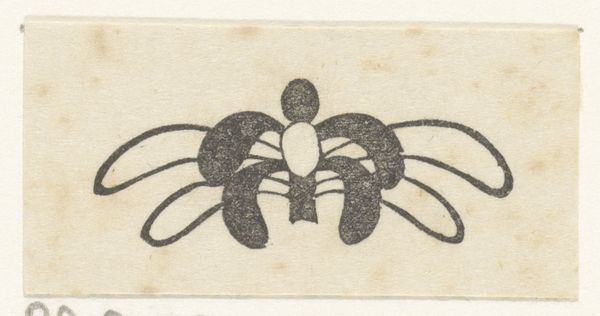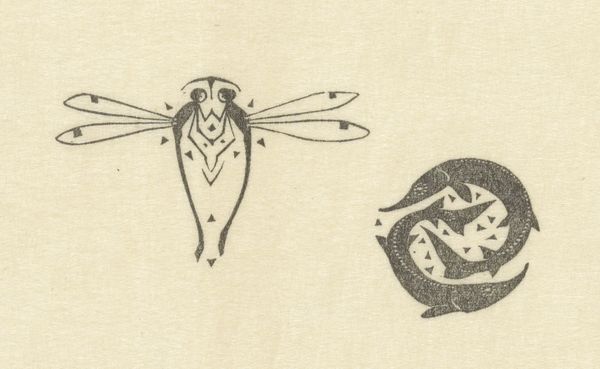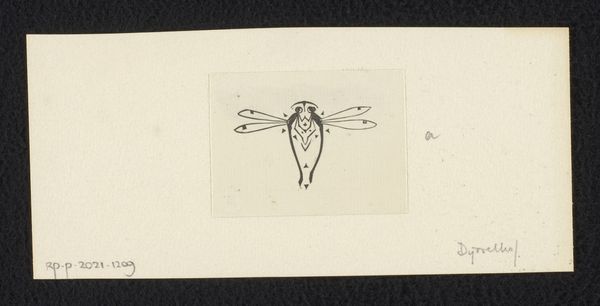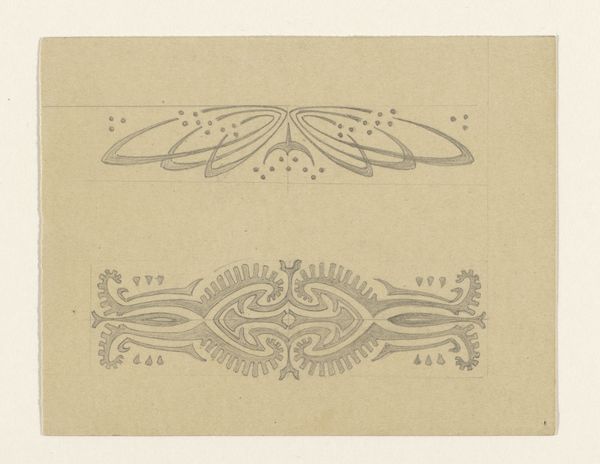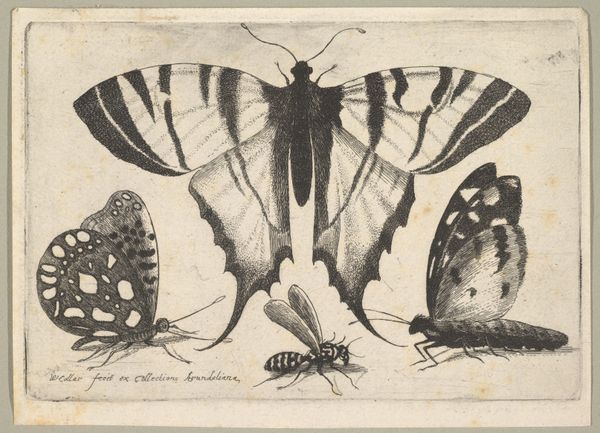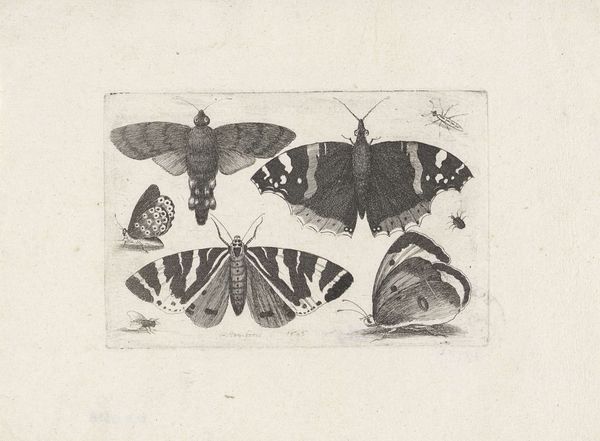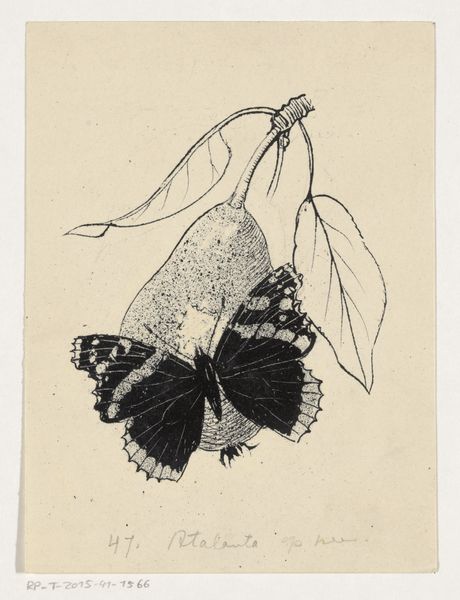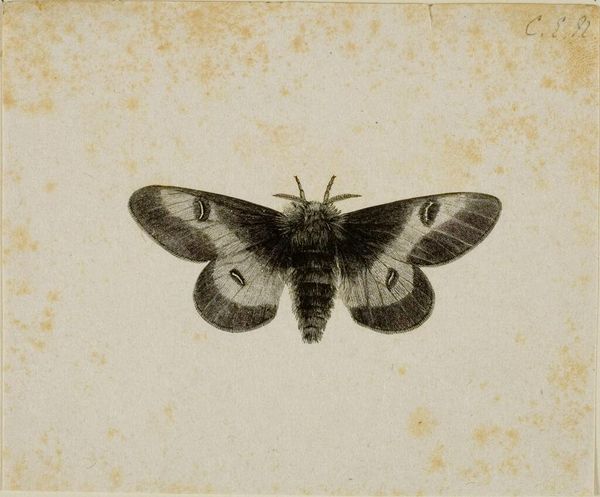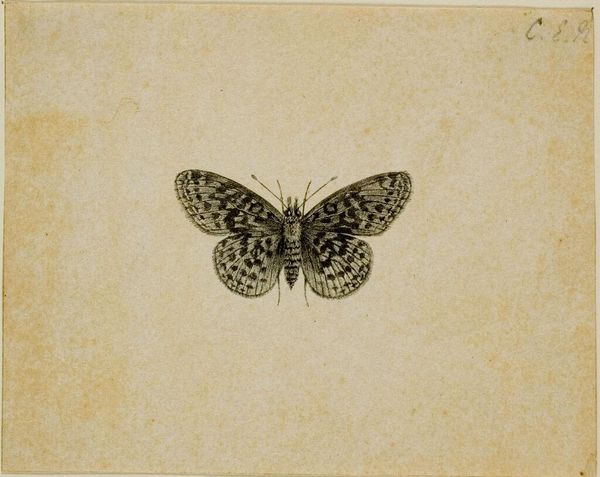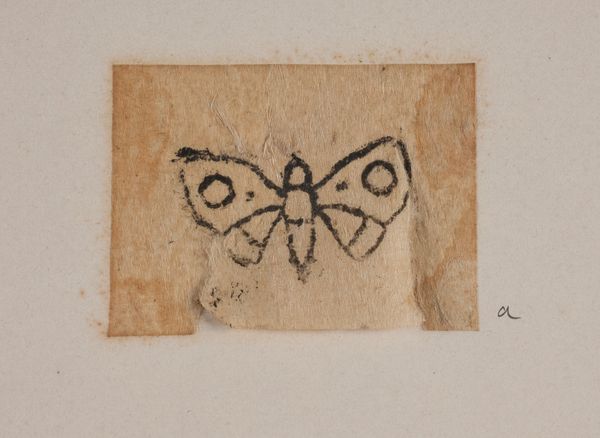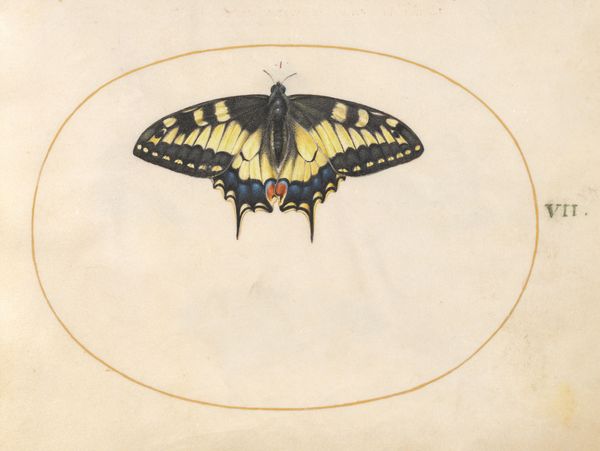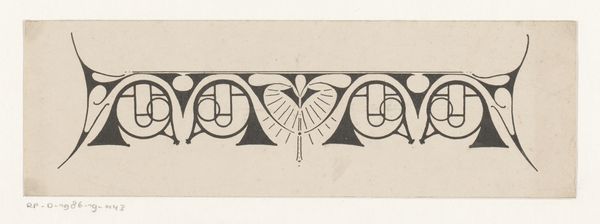
Dimensions: height 58 mm, width 95 mm
Copyright: Rijks Museum: Open Domain
Curator: I'm struck by how bold this woodcut feels despite its modest scale. There's an immediate sense of groundedness with the centered composition, balanced by the butterfly's innate lightness. Editor: The Vlinder, potentially created between 1901 and 1905 by Julie de Graag, definitely speaks to this fascinating period of art that merges symbolism with industrial printing processes. De Graag uses line and form to reduce the butterfly to graphic essence. Curator: Right. This isn't a naturalist depiction. We are really in the realm of Art Nouveau simplification— that urge to reduce a thing to its essential, decorative elements. It is like a logo for nature. What statement does that choice make about humanity's relationship to nature at the time? Editor: It's fascinating to consider that shift in perspective. Think about the societal pressures and expectations placed upon women artists during the early 20th century; even representing nature became a form of coded resistance or assertion of autonomy. Curator: Absolutely. There's something profoundly modern in that tension between the organic subject and the geometric abstraction. We should consider De Graag's other prints when viewing this one, they often share these concerns. The butterfly can carry connotations of personal and social transformation—even the artist's own transformation through the artistic process. Editor: In a society deeply entwined with industrial production and mass media, nature becomes not just a source of beauty, but a site of cultural projection and commentary. The choice of rendering, in some ways, reflects a yearning for order amid chaos. De Graag’s composition suggests the controlled aspects of nature that societies crave, turning butterflies into symmetrical images rather than leaving their shapes unpredictable. Curator: It also begs us to contemplate the function of the butterfly in society as a visual shorthand—an immediately recognizable figure, democratized for the masses by graphic art such as this. Editor: Looking at it now, I notice an absence, too. Where is this butterfly heading? This moment of suspended flight generates dialogue about a society searching for ways to depict nature while holding onto manufactured structures of control. Curator: Indeed, Julie de Graag offers us a glimpse into a complex negotiation, where nature and the human imprint coalesce. Editor: Precisely. It's a reminder that every image—especially those that appear simple—carry layers of meaning and unspoken histories.
Comments
No comments
Be the first to comment and join the conversation on the ultimate creative platform.
